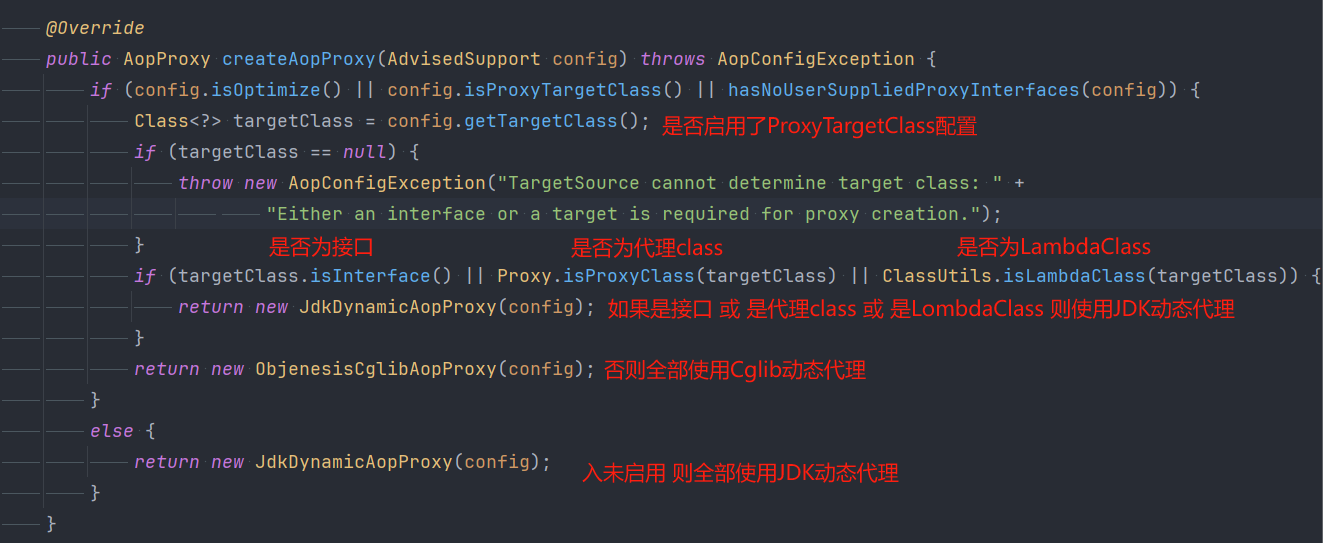openssl3.2 - 官方demo学习 - pkey - EVP_PKEY_RSA_keygen.c
文章目录
- openssl3.2 - 官方demo学习 - pkey - EVP_PKEY_RSA_keygen.c
- 概述
- 笔记
- END
openssl3.2 - 官方demo学习 - pkey - EVP_PKEY_RSA_keygen.c
概述
官方指出 : RSA key 如果小于2048位, 就属于弱key
官方demo中, 给出的默认key长度为4096位
从名字生成上下文
初始化上下文
设置上下的key位数
设置质数数量为2
产生RSA Key. (在我的本本上, 单步调试时, 感觉产生 RSA key时, 卡了一下, 大概不到1秒钟)
打印rsa key内容(可以得到 n, e, d, p, q, key的位数, 公钥, 私钥)
PEM_write_x时, 如果文件句柄是具体的文件, 就是将公钥/密钥保存成了PEM文件.
笔记
/*!
\file EVP_PKEY_RSA_keygen.c
\note
openssl3.2 - 官方demo学习 - pkey - EVP_PKEY_RSA_keygen.c官方指出 : RSA key 如果小于2048位, 就属于弱key
官方demo中, 给出的默认key长度为4096位从名字生成上下文
初始化上下文
设置上下的key位数
设置质数数量为2
产生RSA Key. (在我的本本上, 单步调试时, 感觉产生 RSA key时, 卡了一下, 大概不到1秒钟)
打印rsa key内容(可以得到 n, e, d, p, q, key的位数, 公钥, 私钥)
PEM_write_x时, 如果文件句柄是具体的文件, 就是将公钥/密钥保存成了PEM文件.
*//*-* Copyright 2022-2023 The OpenSSL Project Authors. All Rights Reserved.** Licensed under the Apache License 2.0 (the "License"). You may not use* this file except in compliance with the License. You can obtain a copy* in the file LICENSE in the source distribution or at* https://www.openssl.org/source/license.html*//** Example showing how to generate an RSA key pair.** When generating an RSA key, you must specify the number of bits in the key. A* reasonable value would be 4096. Avoid using values below 2048. These values* are reasonable as of 2022.*/#include <string.h>
#include <stdio.h>
#include <openssl/err.h>
#include <openssl/evp.h>
#include <openssl/rsa.h>
#include <openssl/core_names.h>
#include <openssl/pem.h>#include "my_openSSL_lib.h"/* A property query used for selecting algorithm implementations. */
static const char* propq = NULL;/** Generates an RSA public-private key pair and returns it.* The number of bits is specified by the bits argument.** This uses the long way of generating an RSA key.*/
static EVP_PKEY* generate_rsa_key_long(OSSL_LIB_CTX* libctx, unsigned int bits)
{EVP_PKEY_CTX* genctx = NULL;EVP_PKEY* pkey = NULL;unsigned int primes = 2;/* Create context using RSA algorithm. "RSA-PSS" could also be used here. */genctx = EVP_PKEY_CTX_new_from_name(libctx, "RSA", propq);if (genctx == NULL) {fprintf(stderr, "EVP_PKEY_CTX_new_from_name() failed\n");goto cleanup;}/* Initialize context for key generation purposes. */if (EVP_PKEY_keygen_init(genctx) <= 0) {fprintf(stderr, "EVP_PKEY_keygen_init() failed\n");goto cleanup;}/** Here we set the number of bits to use in the RSA key.* See comment at top of file for information on appropriate values.*/if (EVP_PKEY_CTX_set_rsa_keygen_bits(genctx, bits) <= 0) {fprintf(stderr, "EVP_PKEY_CTX_set_rsa_keygen_bits() failed\n");goto cleanup;}/** It is possible to create an RSA key using more than two primes.* Do not do this unless you know why you need this.* You ordinarily do not need to specify this, as the default is two.** Both of these parameters can also be set via EVP_PKEY_CTX_set_params, but* these functions provide a more concise way to do so.*/if (EVP_PKEY_CTX_set_rsa_keygen_primes(genctx, primes) <= 0) {fprintf(stderr, "EVP_PKEY_CTX_set_rsa_keygen_primes() failed\n");goto cleanup;}/** Generating an RSA key with a number of bits large enough to be secure for* modern applications can take a fairly substantial amount of time (e.g.* one second). If you require fast key generation, consider using an EC key* instead.** If you require progress information during the key generation process,* you can set a progress callback using EVP_PKEY_set_cb; see the example in* EVP_PKEY_generate(3).*/fprintf(stderr, "Generating RSA key, this may take some time...\n");if (EVP_PKEY_generate(genctx, &pkey) <= 0) {fprintf(stderr, "EVP_PKEY_generate() failed\n");goto cleanup;}/* pkey is now set to an object representing the generated key pair. */cleanup:EVP_PKEY_CTX_free(genctx);return pkey;
}/** Generates an RSA public-private key pair and returns it.* The number of bits is specified by the bits argument.** This uses a more concise way of generating an RSA key, which is suitable for* simple cases. It is used if -s is passed on the command line, otherwise the* long method above is used. The ability to choose between these two methods is* shown here only for demonstration; the results are equivalent.*/
static EVP_PKEY* generate_rsa_key_short(OSSL_LIB_CTX* libctx, unsigned int bits)
{EVP_PKEY* pkey = NULL;fprintf(stderr, "Generating RSA key, this may take some time...\n");pkey = EVP_PKEY_Q_keygen(libctx, propq, "RSA", (size_t)bits);if (pkey == NULL)fprintf(stderr, "EVP_PKEY_Q_keygen() failed\n");return pkey;
}/** Prints information on an EVP_PKEY object representing an RSA key pair.*/
static int dump_key(const EVP_PKEY* pkey)
{int ret = 0;int bits = 0;BIGNUM* n = NULL, * e = NULL, * d = NULL, * p = NULL, * q = NULL;/** Retrieve value of n. This value is not secret and forms part of the* public key.** Calling EVP_PKEY_get_bn_param with a NULL BIGNUM pointer causes* a new BIGNUM to be allocated, so these must be freed subsequently.*/if (EVP_PKEY_get_bn_param(pkey, OSSL_PKEY_PARAM_RSA_N, &n) == 0) {fprintf(stderr, "Failed to retrieve n\n");goto cleanup;}/** Retrieve value of e. This value is not secret and forms part of the* public key. It is typically 65537 and need not be changed.*/if (EVP_PKEY_get_bn_param(pkey, OSSL_PKEY_PARAM_RSA_E, &e) == 0) {fprintf(stderr, "Failed to retrieve e\n");goto cleanup;}/** Retrieve value of d. This value is secret and forms part of the private* key. It must not be published.*/if (EVP_PKEY_get_bn_param(pkey, OSSL_PKEY_PARAM_RSA_D, &d) == 0) {fprintf(stderr, "Failed to retrieve d\n");goto cleanup;}/** Retrieve value of the first prime factor, commonly known as p. This value* is secret and forms part of the private key. It must not be published.*/if (EVP_PKEY_get_bn_param(pkey, OSSL_PKEY_PARAM_RSA_FACTOR1, &p) == 0) {fprintf(stderr, "Failed to retrieve p\n");goto cleanup;}/** Retrieve value of the second prime factor, commonly known as q. This value* is secret and forms part of the private key. It must not be published.** If you are creating an RSA key with more than two primes for special* applications, you can retrieve these primes with* OSSL_PKEY_PARAM_RSA_FACTOR3, etc.*/if (EVP_PKEY_get_bn_param(pkey, OSSL_PKEY_PARAM_RSA_FACTOR2, &q) == 0) {fprintf(stderr, "Failed to retrieve q\n");goto cleanup;}/** We can also retrieve the key size in bits for informational purposes.*/if (EVP_PKEY_get_int_param(pkey, OSSL_PKEY_PARAM_BITS, &bits) == 0) {fprintf(stderr, "Failed to retrieve bits\n");goto cleanup;}/* Output hexadecimal representations of the BIGNUM objects. */fprintf(stdout, "\nNumber of bits: %d\n\n", bits);fprintf(stderr, "Public values:\n");fprintf(stdout, " n = 0x");BN_print_fp(stdout, n);fprintf(stdout, "\n");fprintf(stdout, " e = 0x");BN_print_fp(stdout, e);fprintf(stdout, "\n\n");fprintf(stdout, "Private values:\n");fprintf(stdout, " d = 0x");BN_print_fp(stdout, d);fprintf(stdout, "\n");fprintf(stdout, " p = 0x");BN_print_fp(stdout, p);fprintf(stdout, "\n");fprintf(stdout, " q = 0x");BN_print_fp(stdout, q);fprintf(stdout, "\n\n");/* Output a PEM encoding of the public key. */if (PEM_write_PUBKEY(stdout, pkey) == 0) {fprintf(stderr, "Failed to output PEM-encoded public key\n");goto cleanup;}/** Output a PEM encoding of the private key. Please note that this output is* not encrypted. You may wish to use the arguments to specify encryption of* the key if you are storing it on disk. See PEM_write_PrivateKey(3).*/if (PEM_write_PrivateKey(stdout, pkey, NULL, NULL, 0, NULL, NULL) == 0) {fprintf(stderr, "Failed to output PEM-encoded private key\n");goto cleanup;}ret = 1;
cleanup:BN_free(n); /* not secret */BN_free(e); /* not secret */BN_clear_free(d); /* secret - scrub before freeing */BN_clear_free(p); /* secret - scrub before freeing */BN_clear_free(q); /* secret - scrub before freeing */return ret;
}int main(int argc, char** argv)
{int ret = EXIT_FAILURE;OSSL_LIB_CTX* libctx = NULL;EVP_PKEY* pkey = NULL;unsigned int bits = 4096;int bits_i, use_short = 0;/* usage: [-s] [<bits>] */if (argc > 1 && strcmp(argv[1], "-s") == 0) {--argc;++argv;use_short = 1;}if (argc > 1) {bits_i = atoi(argv[1]);if (bits < 512) {fprintf(stderr, "Invalid RSA key size\n");return EXIT_FAILURE;}bits = (unsigned int)bits_i;}/* Avoid using key sizes less than 2048 bits; see comment at top of file. */if (bits < 2048)fprintf(stderr, "Warning: very weak key size\n\n");/* Generate RSA key. */if (use_short)pkey = generate_rsa_key_short(libctx, bits);elsepkey = generate_rsa_key_long(libctx, bits);if (pkey == NULL)goto cleanup;/* Dump the integers comprising the key. */if (dump_key(pkey) == 0) {fprintf(stderr, "Failed to dump key\n");goto cleanup;}ret = EXIT_SUCCESS;
cleanup:EVP_PKEY_free(pkey);OSSL_LIB_CTX_free(libctx);return ret;
}END
相关文章:

openssl3.2 - 官方demo学习 - pkey - EVP_PKEY_RSA_keygen.c
文章目录 openssl3.2 - 官方demo学习 - pkey - EVP_PKEY_RSA_keygen.c概述笔记END openssl3.2 - 官方demo学习 - pkey - EVP_PKEY_RSA_keygen.c 概述 官方指出 : RSA key 如果小于2048位, 就属于弱key 官方demo中, 给出的默认key长度为4096位 从名字生成上下文 初始化上下文…...
密码搜|Facebook 8组问答,搞定Pixel与广告之间的关系!
Q1:Pixel(像素/代码)是什么? A:Pixel有多种称呼:Pixel、像素、代码。它只是一种分析工具,可帮助广告主了解用户在网站上采取的操作,继而衡量广告成效。 设置Facebook Pixel像素代码…...

Apache StringUtils:Java字符串处理工具类
简介 在我们的代码中经常需要对字符串判空,截取字符串、转换大小写、分隔字符串、比较字符串、去掉多余空格、拼接字符串、使用正则表达式等等。如果只用 String 类提供的那些方法,我们需要手写大量的额外代码,不然容易出现各种异常。现在有…...

设计模式 代理模式(静态代理 动态代理) 与 Spring Aop源码分析 具体是如何创建Aop代理的
代理模式 代理模式是一种结构型设计模式,它通过创建一个代理对象来控制对真实对象的访问。这种模式可以用于提供额外的功能操作,或者扩展目标对象的功能。 在代理模式中,代理对象与真实对象实现相同的接口,以便在任何地方都可以使…...

【EI会议征稿通知】第七届先进电子材料、计算机与软件工程国际学术会议(AEMCSE 2024)
第七届先进电子材料、计算机与软件工程国际学术会议(AEMCSE 2024) 2024 7th International Conference on Advanced Electronic Materials, Computers and Software Engineering 第七届先进电子材料、计算机与软件工程国际学术会议(AEMCSE 2024)将于2024年5月10-1…...
Verilog基础:强度建模(一)
相关阅读 Verilog基础https://blog.csdn.net/weixin_45791458/category_12263729.html?spm1001.2014.3001.5482 一、强度建模基础 Verilog HDL提供了针对线网信号0、1、x、z的精准强度建模方式,这样可以允许将两个线网信号进行线与操作从而更加精确地描述出硬件行…...

Spring Boot各类变量的使用
文章目录 1. 变量类型2. 获取变量2.1 获取方式2.2 获取方法2.2.1 通过Value注入获取变量值2.2.2 System.genenv 获取变量值2.2.3 System.getProperty 获取变量值2.2.4 Environment 获取变量值2.2.5 ConfigurationProperties 获取变量值2.2.6 SpringApplication.run 程序启动参数…...

Hive管理UDF详解
大数据集群下,共有三种管理Hive UDF的方式,如下: 名称重启Hive服务Jar保存目录场景直接JAR配置需要HDFS开发辅助JARs目录配置需要本地目录防止意外覆盖文件可重载辅助JAR配置不需要本地目录频繁更新UDF场景{HIVE_HOME}/auxlib目录需要本地目录不建议{HIVE_HOME}/lib目录需要…...

bug笔记:解决 HTTP Error 500.30 - ASP.NET Core app failed to start
总结下后端部署windos iis环境net6版本,500.30问题报错的一种解决方案: 一、问题描述 二、解决方案 检查下是否安装了net6对应的环境,是否已经安装 然后在事件管理器>Windows日志>应用程序,里面查看详细异常记录 在iis下面…...

理解pytorch系列:transpose是怎么实现的
在PyTorch中,transpose()是一种操作,它交换张量中两个指定维度的位置。实现这一点的关键在于不实际移动数据,而是通过改变张量的元数据(包括步长(stride)和尺寸(size))来…...
)
Linux tftp命令教程:文件传输利器(附案例详解和注意事项)
Linux tftp命令介绍 tftp,全称为Trivial File Transfer Protocol(简单文件传输协议)。tftp是一个用于文件传输的客户端命令,用于从远程主机传输文件,包括一些非常简洁、通常嵌入的系统。 Linux tftp命令适用的Linux版…...

beego的模块篇 - task任务
利用该工具来定时的做一些任务,但是有些时候我们的进程内也希望定时的来处理一些事情,可以使用crontab。 1 任务计划 1.1 初始化一个任务 tk1 : task.NewTask("tk1", "0 12 * * * *", func(ctx context.Context) error { fmt.Pri…...

ThreadLocal工具类
ThreadLocal工具类 ThreadLocalUtil.java public class ThreadLocalUtil {static final ThreadLocal THREAD_LOCAL new ThreadLocal();public static <T> T get() {return (T) THREAD_LOCAL.get();}public static void set(Object value) {THREAD_LOCAL.set(value);}p…...

【c语言】扫雷(上)
先开一个test.c文件用来游戏的逻辑测试,在分别开一个game.c文件和game.h头文件用来实现游戏的逻辑 主要步骤: 游戏规则: 输入1(0)开始(结束)游戏,输入一个坐标,如果该坐…...

Java读取制表符文本转换为JSON
在Java开发中,处理各种数据格式是常见的任务。本文将介绍如何使用Java读取制表符文本文件,并将其转换为JSON格式,以便于后续的数据处理和分析。我们将使用Java中的相关库来实现这个过程,并提供详细的代码示例。 引言:…...

从C到C++:向面向对象过渡的技巧与诀窍
从C到C的过渡是一项对于程序员来说非常重要的转变。C是一种基于C语言的面向对象编程语言,它引入了许多新的概念和功能,如类、对象、继承和多态等。这些新的特性使得C在软件开发中更加灵活、可复用和易于维护。 下面是一些向面向对象过渡的技巧和诀窍&am…...

Vue3中动态组件使用
一,动态组件使用: 应用场景:动态绑定或切换组件 应用Vue3碎片: is 1.使用 a.组件A <div class"layout-base"><Button>红茶</Button> </div>a.组件B <div class"layout-base"&g…...

kubernetes工作负载-DamonSet
一、DemonSet的介绍 1、什么是DemonSet DaemonSet 控制器是用来保证在所有节点上运行一个 Pod 的副本当有节点加入集群时, 也会为他们新增一个 Pod。 当有节点从集群移除时,这些 Pod 也会被回收。删除 DaemonSet 将会删除它创建的所有 Pod。 简而言之…...

zabbix其他配置
自动发现 zabbix server 主动的去发现所有的客户端,然后将客户端的信息登记在服务端上。 缺点是如果定义的网段中的主机数量多,zabbix server 登记耗时较久,且压力会较大。 systemctl disable --now firewalld setenforce 0 hostnamectl se…...

蓝桥杯备战 每日一题 (2)
今天的题目是回忆迷宫 这个题目我们来熟悉一下 弗洛伊德算法 的代码模板 弗洛伊德算法用来处理最短路径问题 弗洛伊德算法(Floyd’s algorithm)用于解决图中所有节点对之间的最短路径问题。算法的基本思路是通过逐步迭代更新节点对之间的最短路径长度&a…...

谷歌浏览器插件
项目中有时候会用到插件 sync-cookie-extension1.0.0:开发环境同步测试 cookie 至 localhost,便于本地请求服务携带 cookie 参考地址:https://juejin.cn/post/7139354571712757767 里面有源码下载下来,加在到扩展即可使用FeHelp…...

XCTF-web-easyupload
试了试php,php7,pht,phtml等,都没有用 尝试.user.ini 抓包修改将.user.ini修改为jpg图片 在上传一个123.jpg 用蚁剑连接,得到flag...

微信小程序之bind和catch
这两个呢,都是绑定事件用的,具体使用有些小区别。 官方文档: 事件冒泡处理不同 bind:绑定的事件会向上冒泡,即触发当前组件的事件后,还会继续触发父组件的相同事件。例如,有一个子视图绑定了b…...

突破不可导策略的训练难题:零阶优化与强化学习的深度嵌合
强化学习(Reinforcement Learning, RL)是工业领域智能控制的重要方法。它的基本原理是将最优控制问题建模为马尔可夫决策过程,然后使用强化学习的Actor-Critic机制(中文译作“知行互动”机制),逐步迭代求解…...

.Net框架,除了EF还有很多很多......
文章目录 1. 引言2. Dapper2.1 概述与设计原理2.2 核心功能与代码示例基本查询多映射查询存储过程调用 2.3 性能优化原理2.4 适用场景 3. NHibernate3.1 概述与架构设计3.2 映射配置示例Fluent映射XML映射 3.3 查询示例HQL查询Criteria APILINQ提供程序 3.4 高级特性3.5 适用场…...

2.Vue编写一个app
1.src中重要的组成 1.1main.ts // 引入createApp用于创建应用 import { createApp } from "vue"; // 引用App根组件 import App from ./App.vue;createApp(App).mount(#app)1.2 App.vue 其中要写三种标签 <template> <!--html--> </template>…...

Linux云原生安全:零信任架构与机密计算
Linux云原生安全:零信任架构与机密计算 构建坚不可摧的云原生防御体系 引言:云原生安全的范式革命 随着云原生技术的普及,安全边界正在从传统的网络边界向工作负载内部转移。Gartner预测,到2025年,零信任架构将成为超…...

CMake 从 GitHub 下载第三方库并使用
有时我们希望直接使用 GitHub 上的开源库,而不想手动下载、编译和安装。 可以利用 CMake 提供的 FetchContent 模块来实现自动下载、构建和链接第三方库。 FetchContent 命令官方文档✅ 示例代码 我们将以 fmt 这个流行的格式化库为例,演示如何: 使用 FetchContent 从 GitH…...

如何理解 IP 数据报中的 TTL?
目录 前言理解 前言 面试灵魂一问:说说对 IP 数据报中 TTL 的理解?我们都知道,IP 数据报由首部和数据两部分组成,首部又分为两部分:固定部分和可变部分,共占 20 字节,而即将讨论的 TTL 就位于首…...

OPENCV形态学基础之二腐蚀
一.腐蚀的原理 (图1) 数学表达式:dst(x,y) erode(src(x,y)) min(x,y)src(xx,yy) 腐蚀也是图像形态学的基本功能之一,腐蚀跟膨胀属于反向操作,膨胀是把图像图像变大,而腐蚀就是把图像变小。腐蚀后的图像变小变暗淡。 腐蚀…...
